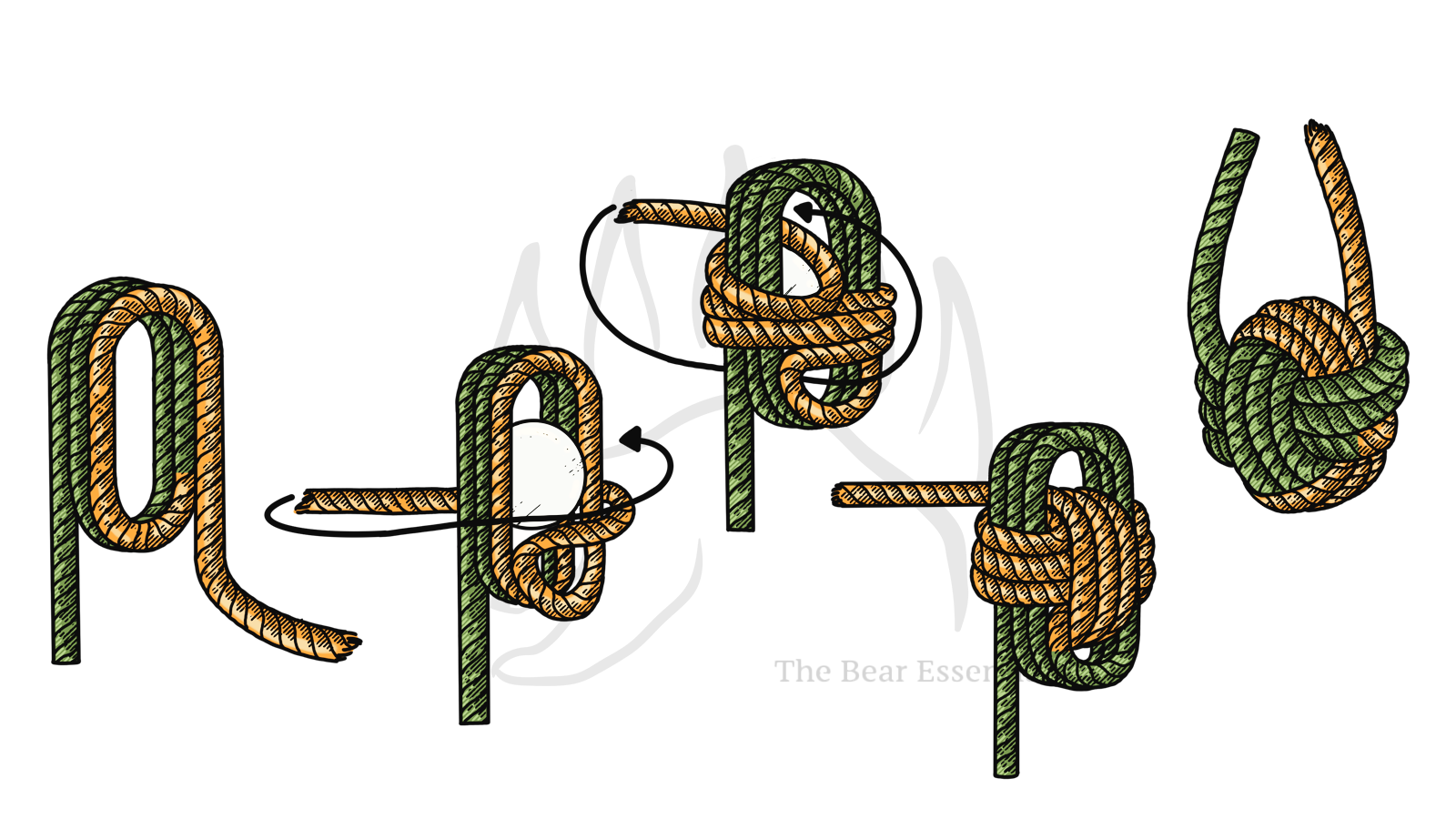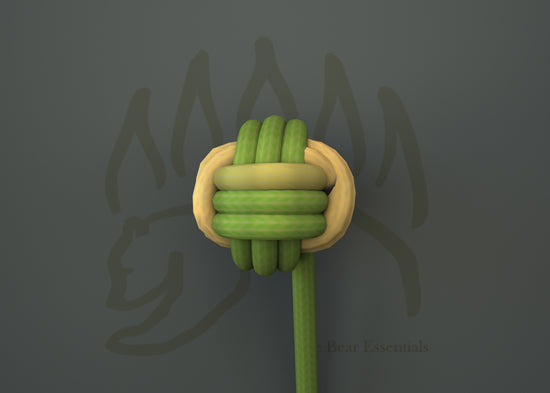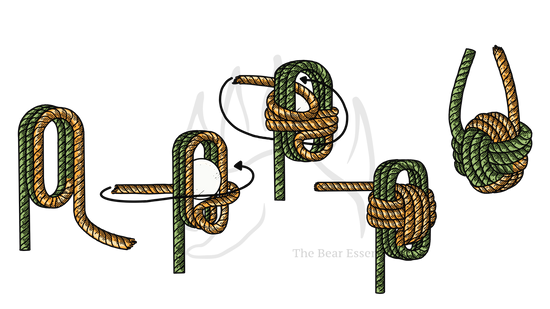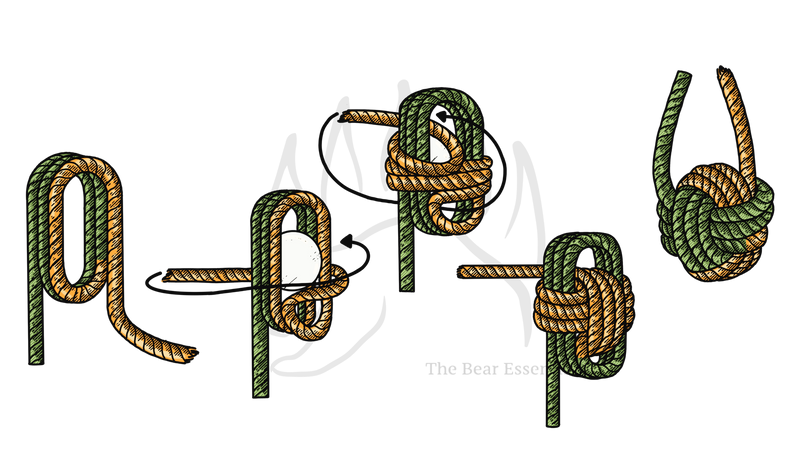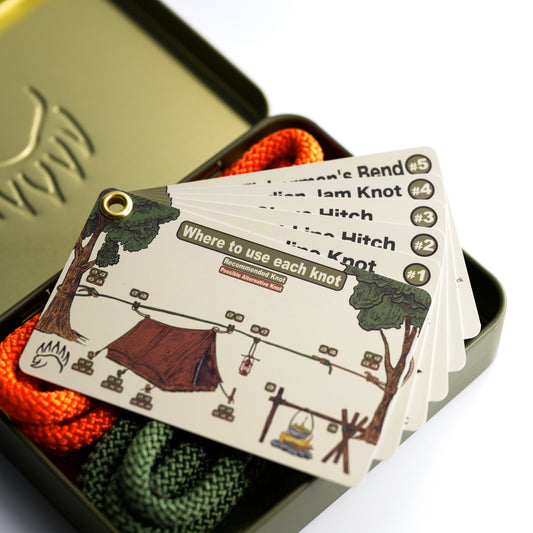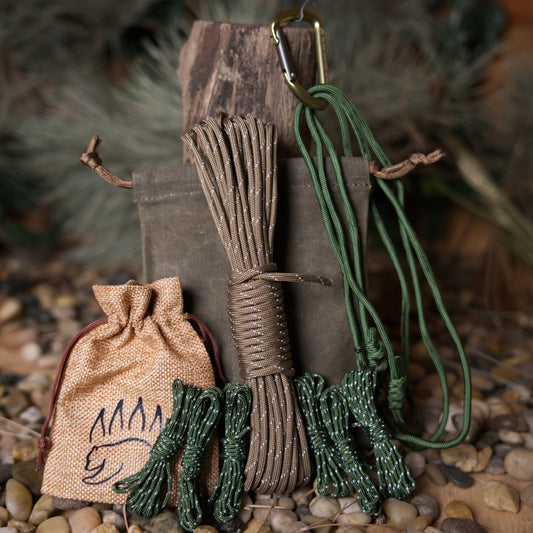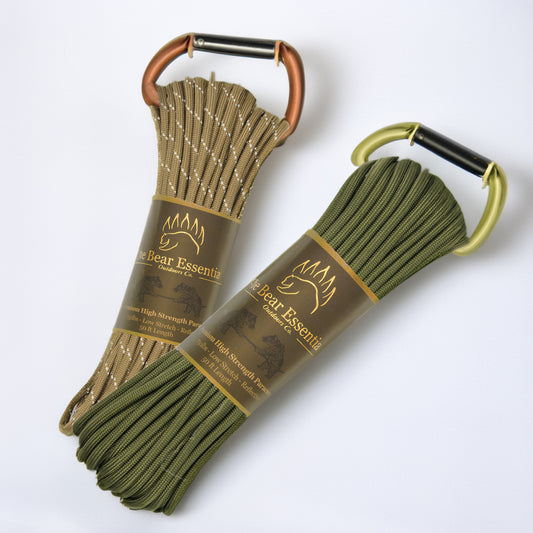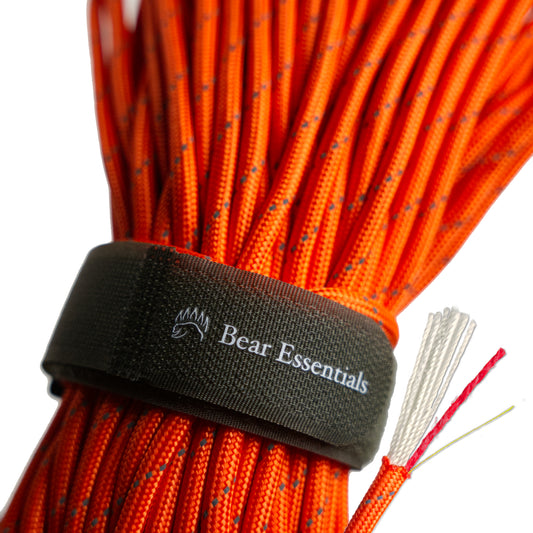How to Tie the Monkey Fist Knot
Usage
The Monkey's Fist is an iconic knot, primarily used to add weight to the end of a rope, making it easier to throw. Originally designed as a “heaving line” knot on ships, it still has many practical applications in modern everyday life, camping and bushcraft.
For functional use, it’s common to tie it around an object like a marble, any heavy and round object, or even round stone to give the knot extra weight and structure.
Why Learn the Monkey’s Fist?
This Monkey’s Fist is not only practical but also a fun knot to master. It’s got a number of applications that may surprise you, adding weight to a rope’s end for easier handling, throwing over a tree, making a heavy anchor, a grip on the end of a lanyard or even the base for a rope swing!
Common Uses
Sailing
- Adds weight to the end of a rope for easier throwing when docking or mooring a boat
- Wrapping around a makeshift rock anchor
Camping and Bushcraft
- Useful for creating weighted lines for throwing over trees
- Creating a Counterweight - can be wrapped around a large rock
- Making a heavy anchor - by wrapping around a large stone
- Impact tool - use it to smash through ice
- Can build the base of a rope swing
Household
- Frequently used in keychains, lanyards, or as decorative doorstop weights
- A Large one can be used as a Dog Chew Toy
Other
- Can be kept as an impact tool and some cases for self defense (Not recommended)
ABOK Number
(Ashley Book of Knots)
Other Names
Category
|
Notable Features
- Compact and Neat: This knot forms a tight, round ball that can be weighted.
- Versatile: Functions as both a functional weight and a decorative element.
- Historical Significance: Used by sailors and occasionally as a slungshot weapon in the 19th century.
Similar Knots
-
Chinese Button Knot vs. Monkey Fist Knot
- Turk's Head Knot vs. Monkey Fist Knot
- Ashley Stopper Knot vs. Monkey Fist Knot
Security Level
The Monkey’s Fist is highly secure, especially when used as a weight on the end of a line. However, if tied improperly or not weighted, it may come undone under heavy load or tension.
Downsides
- Difficult to Untie: The Monkey's Fist can be tough to untie after being loaded or tightened too much.
- Potential Danger with Weights: Heavy weighted versions, like those with rocks or metal objects inside, can become dangerous if misused. Heavily weighted versions have been known to cause injury if thrown improperly.
Structure
The Monkey's Fist is a symmetrical knot consisting of multiple wraps in three directions: around a base (like your fingers), through the initial turns, and over the resulting structure. The knot can be tied with a small ball or weight inside, and once all wraps are complete, it’s tightened progressively to form a neat ball. Patience is essential when tightening to maintain symmetry and avoid uneven tension. Generally, one tightens softly first, then goes over again with a second tighten to maintain shape.
History
The Monkey's Fist originated as a sailor’s knot used to weigh down a heaving line for throwing across long distances, such as from ship to shore. During the 19th century, it also gained notoriety as an improvised weapon called a Slungshot, leading to legal restrictions in some areas.
FAQ
What is the primary purpose of the Monkey’s Fist?
The Monkey’s Fist is used to add weight to the end of a line, making it easier to throw across distances, typically in sailing or outdoor settings.
Can the Monkey’s Fist be used as a weapon?
Historically, the Monkey’s Fist was used as a slungshot weapon, though this is no longer its primary use. Heavy versions can still be dangerous if used improperly, and it’s even technically illegal in some places.
What Knot is used to tie around a Rock?
You use the Monkey’s fist to tie around a rock. However you can increase the amount of wraps to compensate for it’s shape and size.
What materials are best to use inside the Monkey’s Fist?
You can use a variety of spherical objects like marbles, small stones, or even golf balls to give the knot a solid shape and added weight. Irregular shaped objects will still work, but may be difficult to complete the tying.
Is the Monkey’s Fist legal to carry?
The Monkey’s Fist is legal in most places, but in some regions, it’s considered an offensive weapon if modified with heavy weights.
Important Notes on Safety
The Monkey’s Fist is excellent for decorative and practical maritime, camping, and bushcraft applications, but avoid using heavily weighted versions as they can become dangerous when thrown. Always practice with care and make sure to tie the knot properly to prevent accidents.
